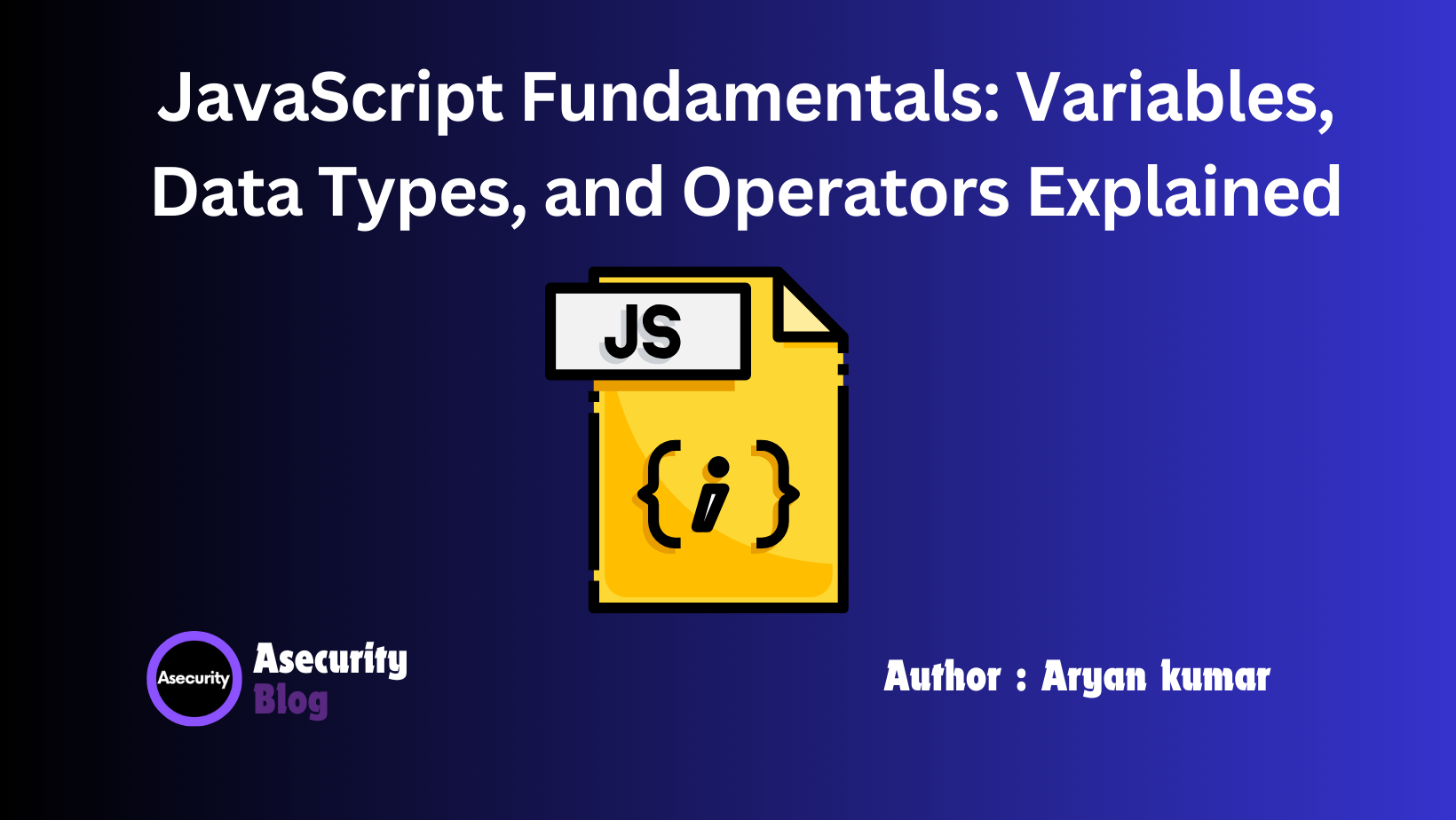JavaScript Fundamentals: Variables, Data Types, and Operators Explained

Now that you've been introduced to the power of JavaScript, it’s time to dive deeper into the building blocks that will make your web pages truly dynamic. In this blog, we’ll cover variables, data types, and operators—the core fundamentals that every JavaScript programmer must understand.
What Are Variables in JavaScript?
Variables are like containers that store information. You can think of them as labeled boxes that hold data, which you can use and change throughout your code. Variables allow your programs to become flexible and responsive, reacting to changes in real-time.
Here’s how you declare a variable in JavaScript:
let message = 'Hello, World!';
In this example, the variable message holds the text 'Hello, World!'. You can later use this variable in your script to display messages, modify its value, or use it in other calculations.
JavaScript provides three main ways to declare variables:
var: The original way to declare variables, but not commonly used today due to its quirks with scope.let: The modern way to declare variables, offering better control over scope and preventing many common errors.const: Declares variables whose values cannot be changed after they are set. Ideal for data that should remain constant.
Example:
let score = 10; // Variable can be updated later
const pi = 3.1416; // Constant variable, value cannot be changed
Data Types in JavaScript: Understanding the Different Kinds of Data
JavaScript works with a variety of data types. Here are the most common ones you’ll use:
- String: Represents text data. Strings are wrapped in quotes.
let name = 'Alice'; // String type
- Number: Represents both integer and floating-point numbers.
let age = 25; // Integer number
let price = 19.99; // Floating-point number
- Boolean: Represents logical values—
trueorfalse.
let isMember = true; // Boolean type
- Null: Represents an empty or non-existent value.
let selectedItem = null; // Null value
- Undefined: When a variable is declared but hasn’t been assigned a value, it is
undefined.
let result; // Undefined value
- Object: Represents complex data structures, like arrays or objects.
let person = { name: 'John', age: 30 }; // Object type
- Array: A special type of object that stores multiple values in a single variable.
let colors = ['red', 'blue', 'green']; // Array
Operators in JavaScript: Performing Actions with Your Data
Operators are used to perform operations on variables and values. Let’s explore the most commonly used ones:
- Arithmetic Operators: Perform basic math operations like addition, subtraction, multiplication, and division.
let sum = 5 + 10; // Addition
let difference = 10 - 2; // Subtraction
let product = 4 * 3; // Multiplication
let quotient = 10 / 2; // Division
- Assignment Operators: Assign values to variables.
let x = 10; // Simple assignment
x += 5; // Adds 5 to the current value of x
- Comparison Operators: Compare two values and return a Boolean (
trueorfalse).
let isEqual = 10 == 10; // true
let isGreater = 10 > 5; // true
- Logical Operators: Used to combine conditions.
let isMember = true;
let isActive = false;
let canLogin = isMember && isActive; // false, because both conditions are not true
- String Operators: Combine strings using the
+operator.
let greeting = 'Hello' + ' ' + 'World!'; // Combines strings into 'Hello World!'
Working with Variables and Operators: A Simple Example
Let’s put it all together with a simple example. Imagine you’re building a shopping cart for an online store. You can calculate the total cost based on the price of items and apply a discount using variables and operators.
let itemPrice = 100;
let quantity = 2;
let discount = 0.1; // 10% discount
let totalCost = (itemPrice * quantity) * (1 - discount);
console.log('Total cost after discount: $' + totalCost);
This script multiplies the item price by the quantity and then applies the discount. The result is the total cost displayed in the console.
Conclusion: Mastering the Building Blocks
Understanding variables, data types, and operators is essential to becoming a proficient JavaScript developer. These concepts are the foundation upon which you’ll build more advanced features like conditional logic, loops, and event handling.
In our next lesson, we’ll explore functions—how you can write reusable blocks of code that make your programs more efficient and organized. By learning JavaScript fundamentals, you’ll be well on your way to creating interactive, dynamic web pages.
Stay tuned as we continue our journey through JavaScript!
Happy coding!
Author: Aryan Kumar is a web developer specializing in HTML, CSS, and JavaScript, working at Asecurity. Contact here (Instagram) : @aryan_geek .
#webdevelopment #html #css #javascript

